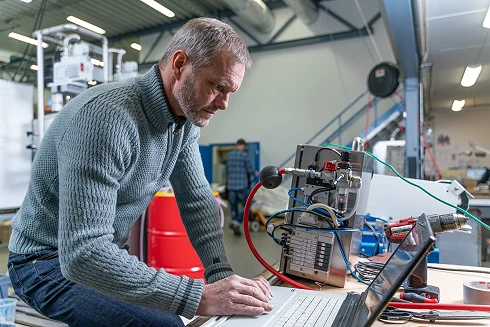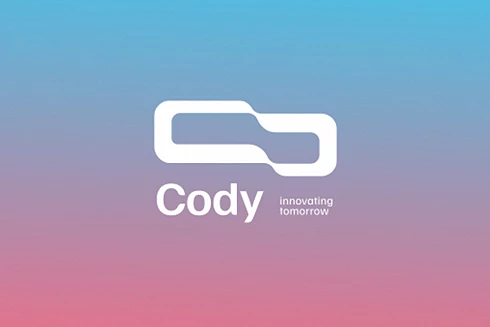VR-glasses as a development tool

The word "virtual" can be defined as "seemingly real."
Virtual Reality (VR) is thus about creating convincing illusions. More specifically, the illusion of being present in an environment that is either computer-generated or based on video recordings. To achieve this illusion, you need to wear VR glasses, an electronic device that covers your entire field of vision with two screens, one for each eye. This provides three-dimensionality and depth perception within the VR glasses.
NEW POSSIBILITIES
Today, VR glasses might first and foremost be thought of as a toy, often used in connection with gaming. However, they are also a valuable tool in the workplace.
WHY VR?
For us at Cody, participating in technological development is at the core of much of what we do and deliver. VR is no exception, and we eagerly incorporate VR glasses as a tool in our projects.
Our product developer Robin Vinje works extensively with product design and development and comments on the benefits of using VR: “Envisioning how a machine or product fits into the space or area it is intended for can be crucial for achieving a satisfactory result without going through many extra rounds.
Seeing this as a 3D drawing on a screen does not necessarily have the same effect as being able to view it in 1:1 scale in the actual environment, as it is today.
By using the VR glasses' “passthrough” mode, you can see the real environment you are in and overlay 3D models.
Thus, using VR opens up new possibilities, allowing you to “operate the product” before it is fully developed. Presenting a solution in this way is often time-saving and shortens the path to decisions,” he says.
Additionally, VR glasses can be connected to a PC for even more possibilities. This allows for more advanced animations and accurate materials to be applied. The 3D model provides a very realistic impression, making it a good way to showcase aesthetics and details.
“PLUG AND PLAY”
VR technology has advanced rapidly in a short time, with major players like Meta and Apple developing their own versions.
Previously, wall sensors and a rather complicated setup were required to enjoy the benefits of VR. Today, it is significantly simplified. - We ensure that what the customer wants to see is created and uploaded, so it’s just a matter of putting on the glasses and getting acquainted with the product,” concludes Vinje.
VR-glasses as a development tool

Ken André has a master’s degree in cybernetics from NTNU and has experience in programming, automation, control systems, and quality management. Since 2019, he has been our CEO.


